Roux-En-Y Gastric Bypass (RYGB) Surgery during High Liquid Sucrose Diet Leads to Gut Microbiota-Related Systematic Alterations
- PMID: 35163046
- PMCID: PMC8835548
- DOI: 10.3390/ijms23031126
Roux-En-Y Gastric Bypass (RYGB) Surgery during High Liquid Sucrose Diet Leads to Gut Microbiota-Related Systematic Alterations
Abstract
Roux-en-Y gastric bypass (RYGB) surgery has been proven successful in weight loss and improvement of co-morbidities associated with obesity. Chronic complications such as malabsorption of micronutrients in up to 50% of patients underline the need for additional therapeutic approaches. We investigated systemic RYGB surgery effects in a liquid sucrose diet-induced rat obesity model. After consuming a diet supplemented with high liquid sucrose for eight weeks, rats underwent RYGB or control sham surgery. RYGB, sham pair-fed, and sham ad libitum-fed groups further continued on the diet after recovery. Notable alterations were revealed in microbiota composition, inflammatory markers, feces, liver, and plasma metabolites, as well as in brain neuronal activity post-surgery. Higher fecal 4-aminobutyrate (GABA) correlated with higher Bacteroidota and Enterococcus abundances in RYGB animals, pointing towards the altered enteric nervous system (ENS) and gut signaling. Favorable C-reactive protein (CRP), serine, glycine, and 3-hydroxybutyrate plasma profiles in RYGB rats were suggestive of reverted obesity risk. The impact of liquid sucrose diet and caloric restriction mainly manifested in fatty acid changes in the liver. Our multi-modal approach reveals complex systemic changes after RYGB surgery and points towards potential therapeutic targets in the gut-brain system to mimic the surgery mode of action.
Keywords: 3-hydroxybutyrate; GABA; RYGB; gut-brain axis; inflammation; metabolomics; microbiome.
Conflict of interest statement
The authors declare no conflict of interest.
Figures
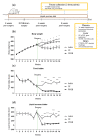
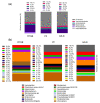
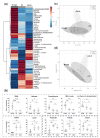
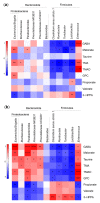
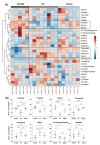
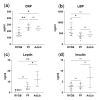



Similar articles
-
Roux-en-Y gastric bypass surgery in Zucker rats induces bacterial and systemic metabolic changes independent of caloric restriction-induced weight loss.Gut Microbes. 2021 Jan-Dec;13(1):1-20. doi: 10.1080/19490976.2021.1875108. Gut Microbes. 2021. PMID: 33535876 Free PMC article.
-
Temporospatial shifts in the human gut microbiome and metabolome after gastric bypass surgery.NPJ Biofilms Microbiomes. 2020 Mar 13;6(1):12. doi: 10.1038/s41522-020-0122-5. NPJ Biofilms Microbiomes. 2020. PMID: 32170068 Free PMC article.
-
Gut Microbiota Contribution to Weight-Independent Glycemic Improvements after Gastric Bypass Surgery.Microbiol Spectr. 2023 Jun 15;11(3):e0510922. doi: 10.1128/spectrum.05109-22. Epub 2023 Apr 6. Microbiol Spectr. 2023. PMID: 37022171 Free PMC article.
-
Physiological mechanisms behind Roux-en-Y gastric bypass surgery.Dig Surg. 2014;31(1):13-24. doi: 10.1159/000354319. Epub 2014 May 8. Dig Surg. 2014. PMID: 24819493 Review.
-
The physiology underlying Roux-en-Y gastric bypass: a status report.Am J Physiol Regul Integr Comp Physiol. 2014 Dec 1;307(11):R1275-91. doi: 10.1152/ajpregu.00185.2014. Epub 2014 Sep 24. Am J Physiol Regul Integr Comp Physiol. 2014. PMID: 25253084 Free PMC article. Review.
Cited by
-
Subchronic toxic effects of bisphenol A on the gut-liver-hormone axis in rats via intestinal flora and metabolism.Front Endocrinol (Lausanne). 2024 Aug 29;15:1415216. doi: 10.3389/fendo.2024.1415216. eCollection 2024. Front Endocrinol (Lausanne). 2024. PMID: 39268238 Free PMC article.
-
Glyphosate-induced changes in the expression of galanin and GALR1, GALR2 and GALR3 receptors in the porcine small intestine wall.Sci Rep. 2024 Apr 17;14(1):8905. doi: 10.1038/s41598-024-59581-8. Sci Rep. 2024. PMID: 38632282 Free PMC article.
-
A 3D co-culture intestinal organoid system for exploring glucose metabolism.Curr Res Food Sci. 2022 Nov 28;6:100402. doi: 10.1016/j.crfs.2022.11.021. eCollection 2023. Curr Res Food Sci. 2022. PMID: 36479229 Free PMC article. Review.
-
Unraveling the gut-brain axis: the impact of steroid hormones and nutrition on Parkinson's disease.Neural Regen Res. 2024 Oct 1;19(10):2219-2228. doi: 10.4103/1673-5374.391304. Epub 2023 Dec 21. Neural Regen Res. 2024. PMID: 38488556 Free PMC article.
References
MeSH terms
Substances
Grants and funding
LinkOut - more resources
Full Text Sources
Medical
Research Materials
Miscellaneous

